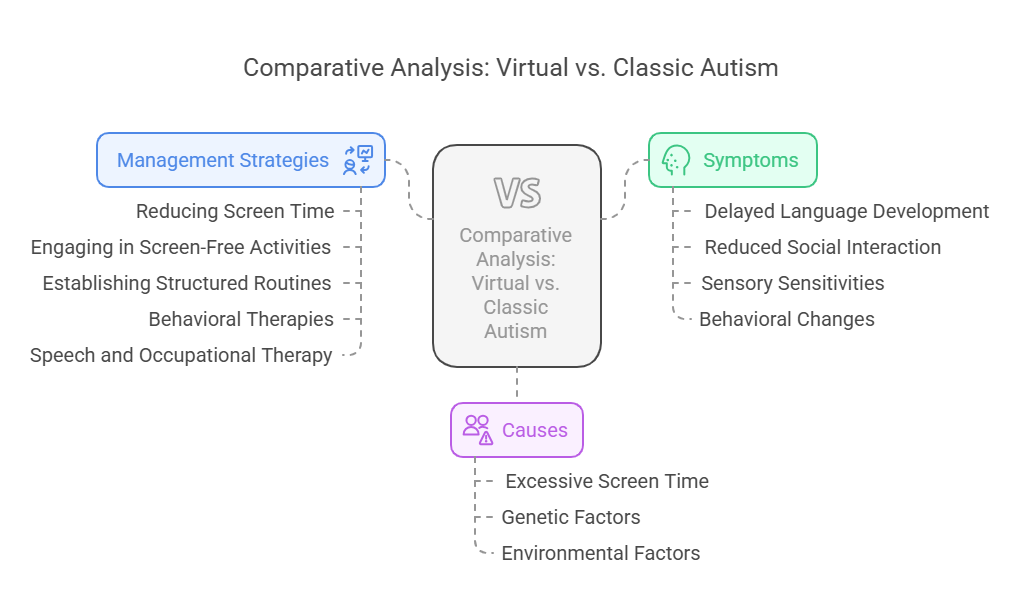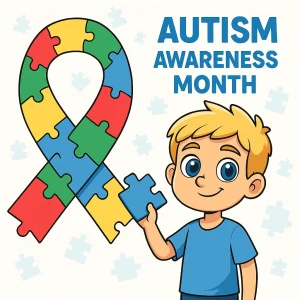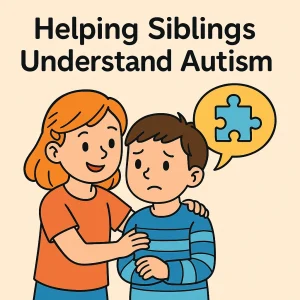Virtual Autism in Kids: Signs, Causes and How to Help
By Rajini D
Last Updated: April 30, 2024
In the digital era, “virtual autism” emerges as a pressing concern for young children exposed to excessive screen time. This condition mirrors symptoms similar to Autism Spectrum Disorder, including speech delays and developmental setbacks. As we navigate our technology-filled world, it’s crucial to understand the impact of digital overexposure on our children’s critical developmental years. This understanding can lead us toward healthier screen practices to support their growth.

Understanding Virtual Autism
What Is Virtual Autism?
What exactly is “virtual autism”? This term, though not officially recognized in medical communities, describes a set of autism-like symptoms that some children develop as a result of excessive screen time. Unlike Autism Spectrum Disorder (ASD), which is a developmental disability influenced by genetic and environmental factors, virtual autism is directly associated with the digital environments that captivate young children’s attention for prolonged periods.
Also Read: Virtual Autism: Things that you need to know
Virtual vs. Classic Autism – Knowing the Difference
While both virtual and classic autism share similar symptoms, distinguishing between them is crucial for understanding and intervention. Autism Spectrum Disorder (ASD), is a developmental disability with symptoms typically appearing in early childhood. It affects communication, behavior, and social interaction in a spectrum of severity.
Comparative Analysis: Virtual vs. Classic Autism (ASD)

Identifying Signs of Virtual Autism
Virtual autism, a condition marked by symptoms similar to those of Autism Spectrum Disorder (ASD), primarily arises from excessive digital exposure. Understanding and recognizing these signs early can help parents and caregivers take necessary actions to limit its impact and improve developmental outcomes.
Symptoms Highlighting Speech Delays and Communication Difficulties
One of the most noticeable symptoms of virtual autism is speech delay. Children may start talking later than expected, or they might not use as many words as their peers. Additionally, these children may exhibit difficulties in:
- Forming complete sentences or using appropriate grammar.
- Understanding and following verbal instructions.
- Engaging in conversational turn-taking, often showing disinterest in interactive communication.
Communication isn’t the only area affected. Parents might also notice:
- A lack of eye contact during interactions.
- Limited use of gestures or facial expressions to communicate.
- An apparent preference for interacting with digital devices over people.
Know more about our article on Symptoms of Virtual Autism in The Digital Age
Causes of Virtual Autism
The rapid integration of digital technology into our daily lives has brought about significant changes in how we interact with the world around us. For young children, whose developmental trajectories are still taking shape, the impact of this digital immersion can be profound. Here, we explore the causes behind virtual autism, focusing particularly on the role of excessive screen time and its effects on speech and language development.
Impact of Excessive Screen Time
The primary driver behind virtual autism is the substantial amount of time children spend engaging with digital devices. This excessive screen time can lead to virtual autism by:
- Limiting Direct Human Interaction: When screens replace human interaction, children miss out on critical social cues and the natural practice of language skills that occur during person-to-person communication.
- Reducing Physical Activity: Active play is replaced by passive consumption, which is less conducive to the overall cognitive and motor skills development necessary for speech and language proficiency.
- Disrupting Routine: Excessive screen time often disrupts daily routines, such as regular meal times and sleep, which are essential for healthy childhood development.
Read more: 7 Ways Too Much Screen Time Could Affect Your Child’s Mood
Neurological Effects on Young Children
Digital devices can also have direct neurological effects that contribute to symptoms of virtual autism:
- Overstimulation: Fast-paced visuals and sounds provide a level of stimulation that is difficult to match in the real world, potentially leading to sensory overload and difficulties with attention span.
- Neuroplasticity Challenges: Young children’s brains are highly plastic, meaning they are shaped significantly by their experiences. Prolonged exposure to digital environments can influence the way neural pathways are formed, emphasizing patterns that prioritize rapid processing of digital information over other cognitive skills like problem-solving or emotional regulation.
- Impact on Sleep: Screens emit blue light, which can interfere with the production of melatonin, the hormone responsible for regulating sleep. Poor sleep can exacerbate cognitive and behavioral issues, including those related to speech and language development.

Strategies for Managing Virtual Autism
Managing virtual autism effectively involves creating an environment that encourages less screen time and more interactive, physical activities. These strategies are designed not just to reduce the symptoms of virtual autism but also to enhance overall development, particularly in areas of speech and language. Here’s how families can implement these changes:
Reducing Screen Time
Reducing screen time is crucial for managing virtual autism:
- Set Clear Limits: Establish specific times when screens are allowed and stick to them. This might include screen-free meals and turning off devices at least one hour before bedtime.
- Create Screen-Free Zones: Designate certain areas of the home, such as bedrooms and the dining room, as screen-free zones to encourage physical activity and interaction.
- Use Apps to Monitor Usage: There are various apps available that help monitor and limit the amount of time spent on devices. Utilizing these tools can help keep screen time in check.
Importance of Structured Routines
A structured routine helps children know what to expect throughout the day, reducing anxiety and providing opportunities for balanced activities:
- Regular Meal Times: Having fixed times for meals helps regulate the day and ensures that the child is not eating in front of the screen.
- Set Times for Physical Activity: Whether it’s a walk in the park or a swim at the local pool, scheduled daily exercise can greatly benefit physical and cognitive development.
- Predictable Bedtime Routines: A consistent bedtime routine that avoids screens can improve sleep quality, which is crucial for brain development and function.
Engaging in Physical and Language-Enriching Activities
Engaging in physical activities that also promote language skills is beneficial:
- Interactive Storytelling: Engage your child with storybooks or create your own stories together. This not only improves language skills but also enhances imagination.
- Music and Dance: Activities like singing and dancing are not only fun but also help in the development of motor skills and language through rhythm and repetition.
- Art and Craft Projects: These activities encourage creativity and can also be used to expand vocabulary as you describe what you’re creating together.
Screen-Free Activity Ideas
To further encourage speech and language development, consider these screen-free activities:
- Nature Walks: Discuss what you see, hear, and smell, using descriptive language and encouraging your child to express their thoughts.
- Cooking Together: Cooking is a practical activity that involves following directions and using a wide range of vocabulary.
- Puzzle Solving: Working on puzzles together promotes problem-solving skills and provides opportunities for conversation.
Also read: Virtual Autism vs. Autism: What Parents Need to Know
Weekly Screen-Free Family Activities Planner
| Day of the Week | Activity | Expected Outcome |
|---|---|---|
| Monday | Family Board Game Night | Enhances cognitive skills and family bonding. |
| Tuesday | Outdoor Nature Walk | Promotes physical health and appreciation for nature. |
| Wednesday | Creative Arts and Crafts Session | Stimulates creativity and fine motor skills development. |
| Thursday | Cooking Together | Teaches life skills and encourages teamwork. |
| Friday | Storytelling Circle | Improves language skills and imagination. |
| Saturday | Community Sports or Group Dance Class | Enhances physical fitness and social interaction. |
| Sunday | DIY Science Experiments or Gardening Project | Promotes curiosity, learning, and responsibility towards nature. |
Conclusion
Navigating the world of virtual autism demands empathy, understanding, and the right strategies. It’s about finding a balance with technology, using it in ways that enrich rather than detract from our children’s development. Each step we take, from adjusting screen time to engaging in meaningful activities, makes a significant difference in fostering a healthier digital environment for our kids.
We invite you to explore the support and resources available at Wellness Hub. Our platform is dedicated to helping families like yours with advice, tools, and a community that understands what you’re going through. Together, we can create a supportive space for our children to thrive, both online and in the real world.
Frequently Asked Questions:
1. What is virtual autism?
Virtual autism refers to autism-like symptoms in young children that arise from excessive screen time. Unlike traditional Autism Spectrum Disorder (ASD), these symptoms are primarily linked to prolonged exposure to digital devices and can often be mitigated by reducing screen time.
2. How can I tell if my child has virtual autism?
Symptoms of virtual autism include delayed language development, reduced social interaction, sensory sensitivities, and behavioral changes such as irritability. Early identification and intervention are key to managing these symptoms effectively.
3. What are the strategies for managing virtual autism?
Managing virtual autism involves creating a balanced digital diet for children. This includes establishing screen time limits, encouraging screen-free activities, utilizing visual aids for communication, and incorporating sensory integration techniques to support behavioral and developmental needs.
4. Can a child recover from virtual autism?
Yes, with appropriate strategies and interventions, children showing symptoms of virtual autism can show significant improvement. Reducing screen time and increasing engagement in physical and social activities are crucial steps towards recovery.
5. How does Wellness Hub support families dealing with virtual autism?
Wellness Hub offers a range of resources, support, and guidance for families navigating the challenges of virtual autism. From educational materials and expert advice to community forums for shared experiences, Wellness Hub is committed to helping families find a balance between technology use and holistic development.
6. Why is it important to address virtual autism?
Addressing virtual autism is vital for ensuring that children achieve healthy developmental milestones. Balancing technology use with real-world interactions helps prevent the potential negative impacts of excessive screen time on a child’s social, emotional, and cognitive development.
7. Where can I find more information or support for managing virtual autism?
For more information or support, visit Wellness Hub’s website. Explore our resources, connect with experts, and join a community of families navigating the challenges of virtual autism together.
8. What are some alternative activities to reduce screen time for children?
Alternative activities to reduce screen time include outdoor play, creative arts and crafts, interactive storytime, participation in sports or clubs, and cooking together. These activities promote physical health, enhance social skills, stimulate creativity, and offer valuable family bonding time.
9. How does excessive screen time affect a child’s development?
Excessive screen time can lead to delayed language development, sensory and motor skill challenges, social interaction difficulties, and behavioral changes such as irritability and hyperactivity. It can impact a child’s ability to engage with the real world effectively, making it essential to manage screen usage.
10. Can implementing structured routines help manage virtual autism?
Yes, implementing structured routines can significantly help manage virtual autism. Structured routines provide predictability and security, reducing anxiety and helping children understand what is expected of them. This consistency is beneficial for behavioral management and can improve a child’s engagement in non-screen activities.
About the Author:
Rajini Darugupally
M.Sc., Speech-Language Pathologist (9+ years of experience)
Rajini is a passionate and dedicated Speech-Language Pathologist with over 9+ years of experience, specializing in both developmental speech and language disorders in children and rehabilitation in adults. Driven by a desire to empower each individual to find their voice, Rajini brings a wealth of experience and a warm, genuine approach to therapy. Currently, at Wellness Hub, she thrives in a team environment that values innovation, compassion, and achieving results for their clients.
Book your Free Consultation Today
Parent/Caregiver Info:
Client’s Details:
* Error Message









